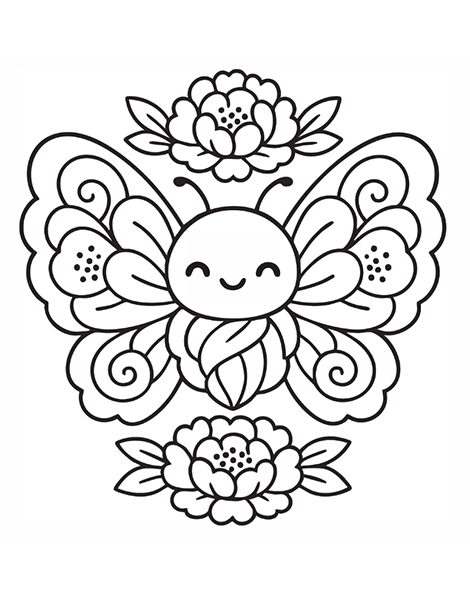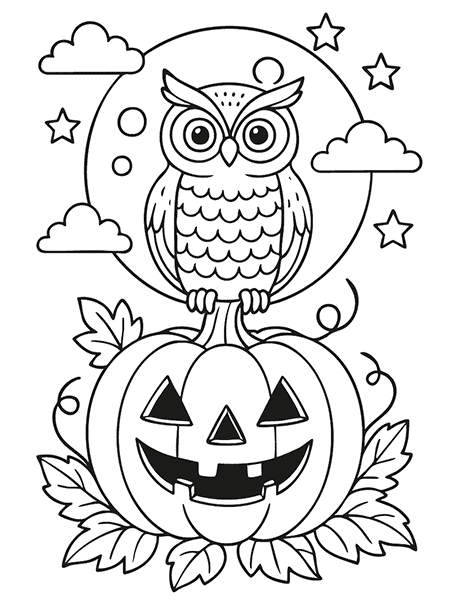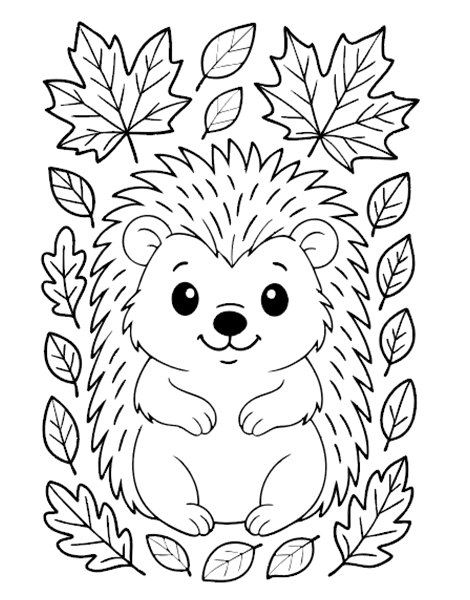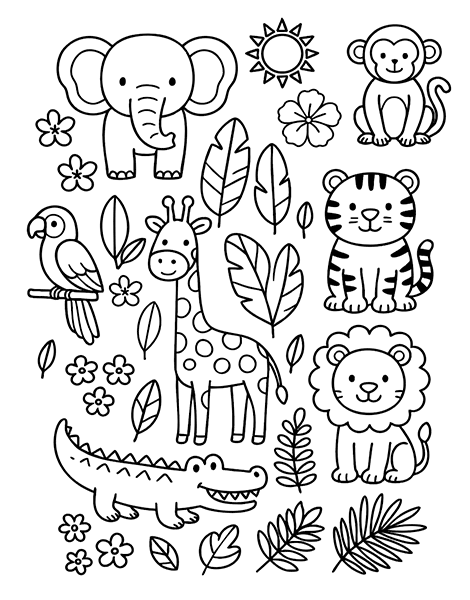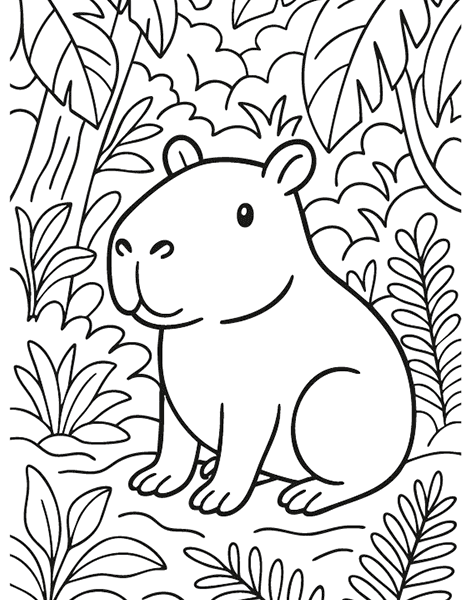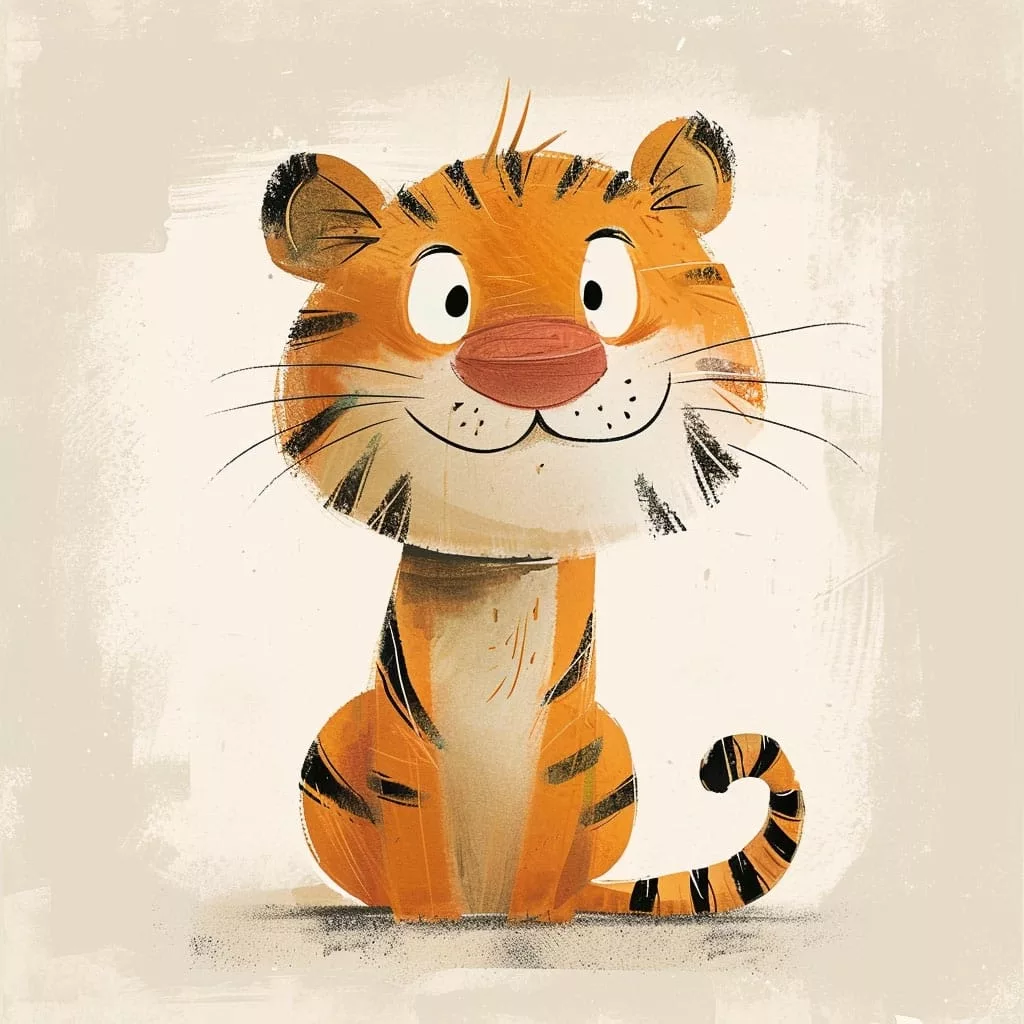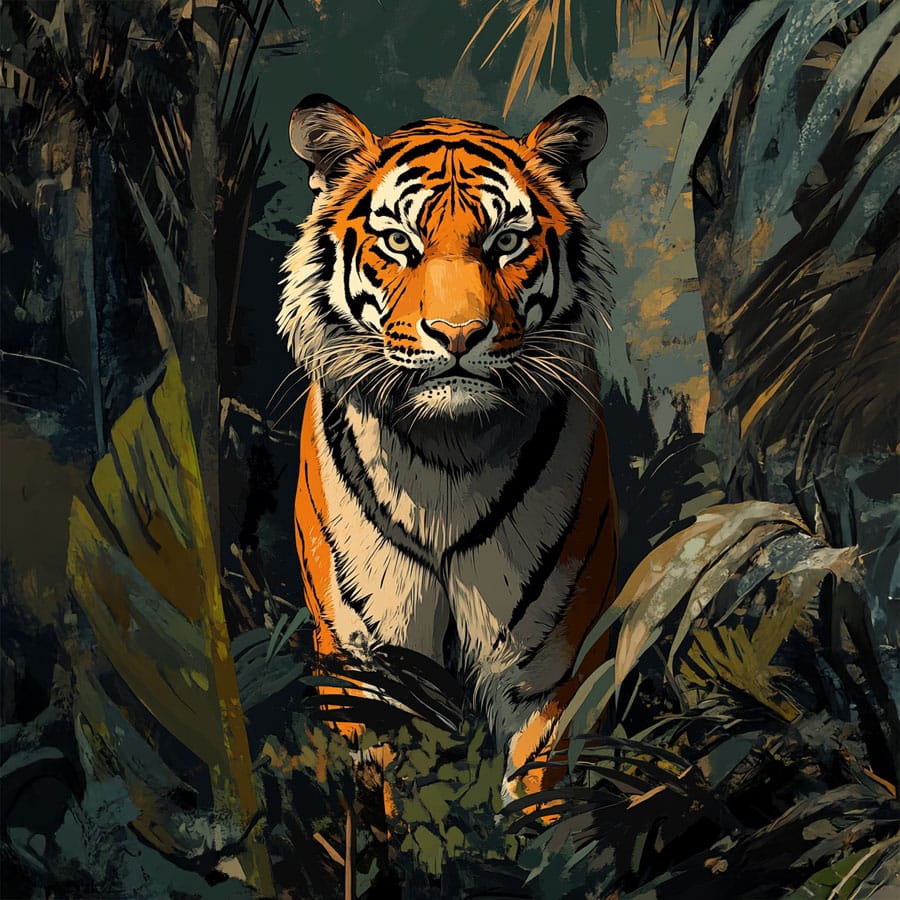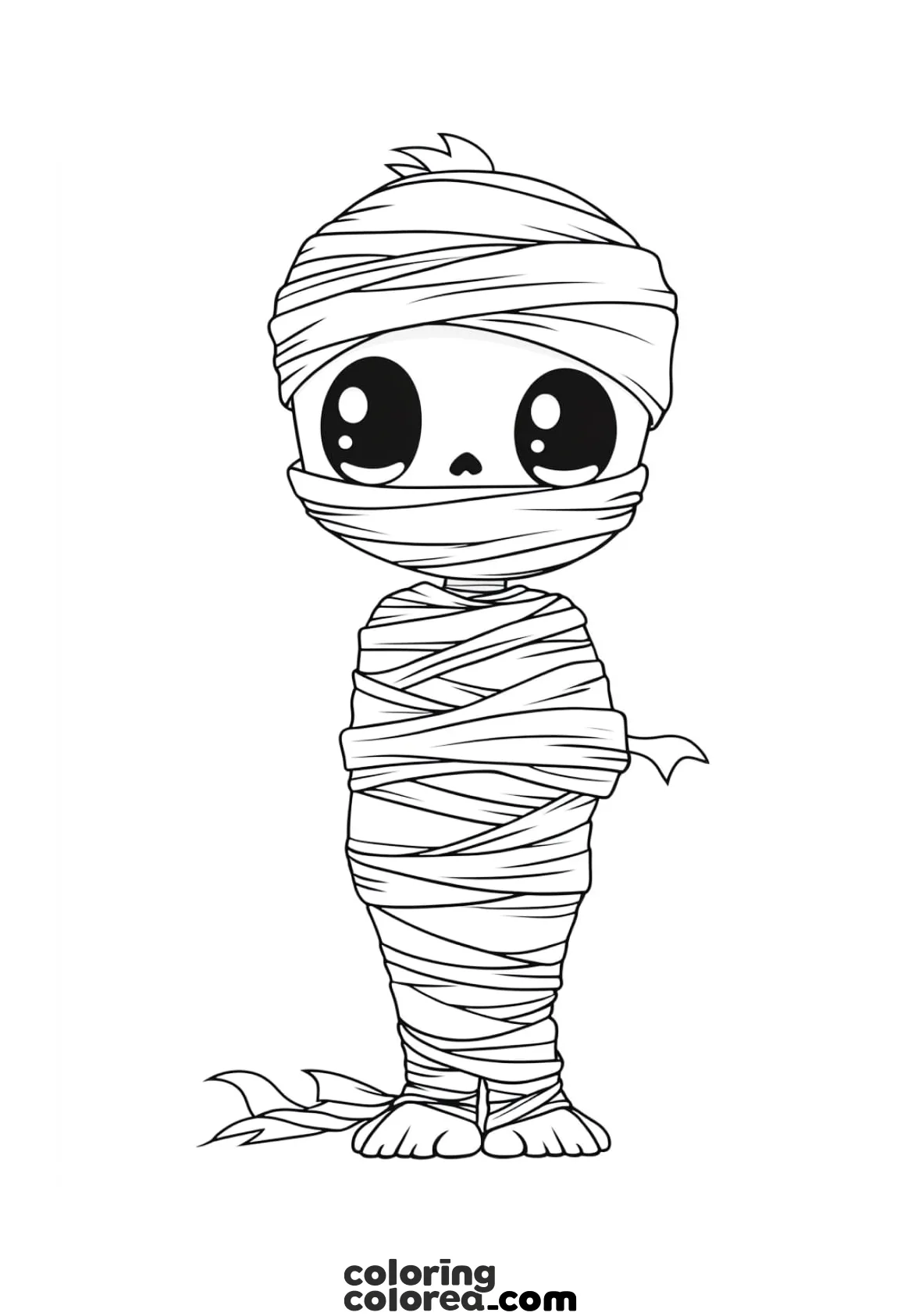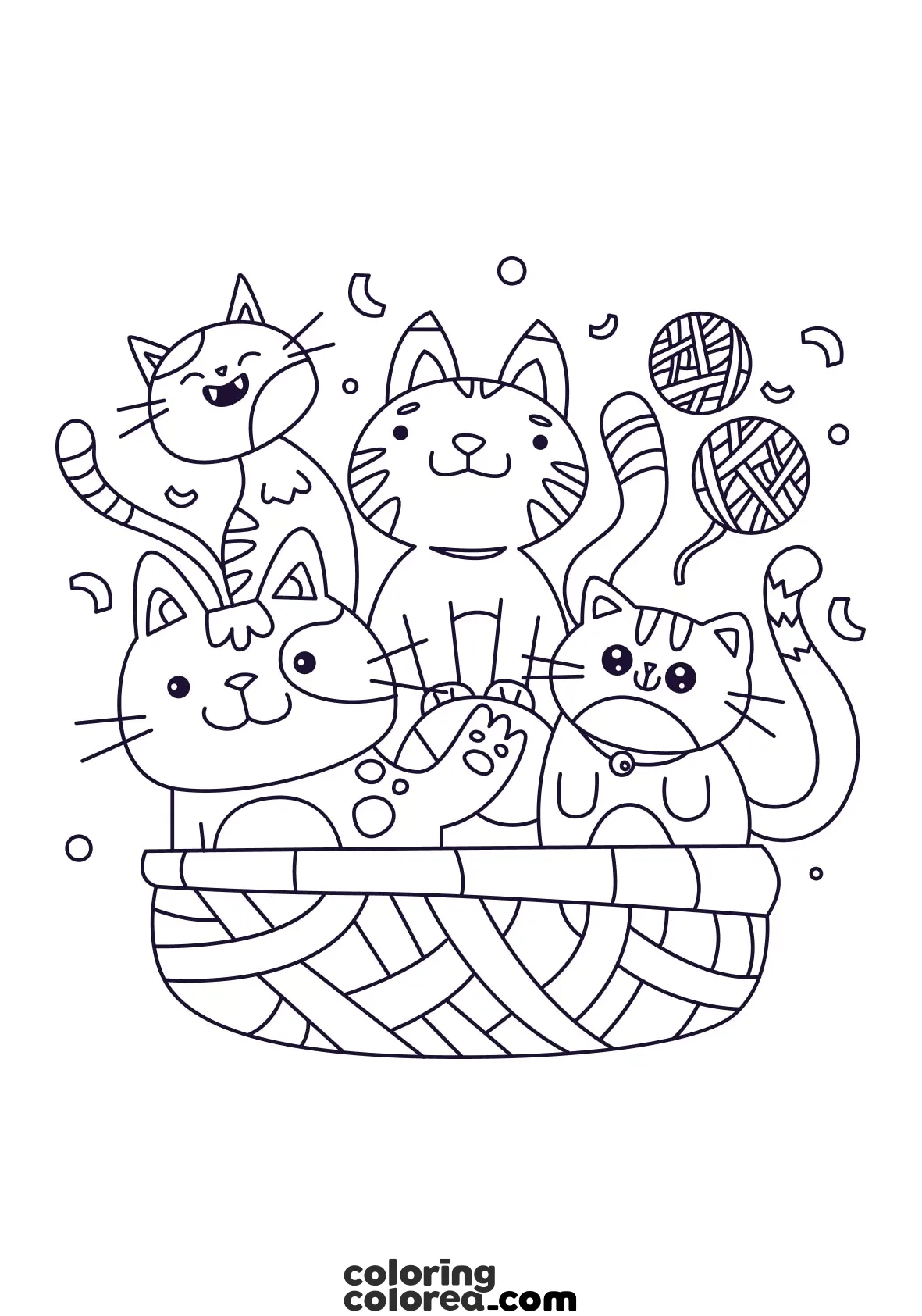There are several subspecies of tigers, each adapted to its particular environment:
- The Bengal tiger, which lives in the jungles and grasslands of India, is perhaps the most well-known.
- The Siberian tiger, with its thick and light-colored fur, is built to survive the harsh winters of Russia.
- The Sumatran tiger, smaller in size, inhabits the dense jungles of Indonesia.
These vastly different habitats show us how nature shapes each species to survive. Coloring this drawing can be a great moment to reflect on the diversity and richness of life on our planet.
Tips for Coloring the Tiger Cub
Coloring this majestic animal is a way to observe and appreciate its beauty and fragility. When deciding which colors to use, think about the warm tones of the tiger’s fur, ranging from orange to the black and white of its stripes. These stripes play an important role in the tiger’s life—they help it camouflage in its environment, making it almost invisible among the sunbeams and jungle shadows.
Deepening Your Color Palette:
- Orange: Explore different shades of orange to add depth to its fur. Use a warmer orange for areas exposed to sunlight and a cooler orange for shaded areas.
- Black: Vary the thickness and intensity of the black stripes for a more realistic effect. Use softer black for thinner stripes and deeper black for thicker ones.
- White: Besides highlighting areas like the belly or spots, use white to accentuate details such as whiskers or eye reflections.
- Green: For the background, experiment with different shades of green. A deep, dark green can create a denser jungle atmosphere, while a bright green evokes hope and renewal.
Incorporating Textures
- Fur: Use different shading techniques to create the look of soft, fluffy fur. Short parallel lines can simulate hair, or apply a slightly darker color in areas where light doesn’t reach.
- Leaves: Add textures to leaves for a more realistic appearance. Irregular lines or small dots can simulate leaf veins.
- Ground: Use darker brown tones to create shadows and give the impression of damp soil.
- Additional Elements: Add details that enhance the narrative, like a butterfly fluttering near the tiger or an animal footprint on the ground.
Connecting with Conservation
- Research: Before coloring, learn about tigers and their current situation. This will help you emotionally connect with the drawing and convey a more powerful message.
- Symbols: Include symbols representing conservation efforts, such as a heart, a tree, or a human hand holding a branch.
- Write a Message: If you’d like, add a short, heartfelt message about the importance of protecting tigers.
Want to learn more about tigers and how to help protect them? Click here!

